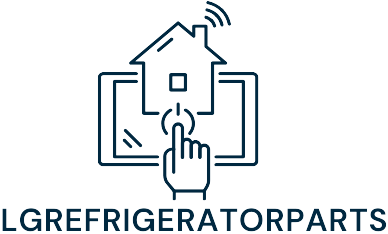Table of Contents
ToggleIn the ever-changing world of Ohio real estate, staying updated is as crucial as knowing the difference between a buckeye and a chestnut. Whether it’s the latest market trends or quirky property listings that make you chuckle, Ohio’s real estate scene has something for everyone. From the bustling streets of Columbus to the serene landscapes of rural Ohio, the state’s housing market is full of surprises that can leave even seasoned investors scratching their heads.
As prices fluctuate and neighborhoods evolve, understanding the pulse of Ohio real estate can be your golden ticket to making savvy decisions. So grab your favorite beverage and get ready to dive into the latest news that’ll keep you informed and maybe even inspire a few laughs along the way. After all, who said real estate can’t be fun?
Latest Trends in Ohio Real Estate
The Ohio real estate market continues to evolve, reflecting shifts that are important for buyers and investors. Understanding local dynamics can enhance property decisions across the state.
Market Overview
Recent months show an uptick in residential demand across urban and suburban areas. Columbus, Cleveland, and Cincinnati lead the charge, with increasing interest in affordable housing. Inventory levels remain low, which exerts upward pressure on home prices. Sellers are experiencing quicker sales, often receiving multiple offers within days. Remote work influences preferences, prompting moves towards spacious homes in quieter neighborhoods. Such trends indicate a possible long-term shift toward lifestyle-oriented purchasing.
Key Statistics
Current data reveals that the median home price in Ohio stands at approximately $230,000. A year-over-year increase of about 10% reflects sustained buyer interest. Homes typically spend around 30 days on the market, significantly less than in previous years. Listings in metropolitan areas show an even sharper decline in days on the market, averaging 20 days. According to the Ohio Realtors, the total number of homes sold increased by 5% in the last quarter, highlighting ongoing demand despite economic fluctuations.
Notable Developments in Ohio Real Estate

Ohio’s real estate market continues to evolve with significant activity across both residential and commercial sectors.
New Housing Projects
Recent housing projects indicate a robust response to the rising demand for affordable living options. Developers focus on urban areas like Columbus, where population growth drives the need for new properties. Specific initiatives include mixed-use developments that combine residential and retail spaces, catering to lifestyle preferences. Reports reveal over 5,000 new housing units in progress statewide. Many of these projects aim to attract remote workers seeking larger homes in suburban settings. Notably, the city’s zoning changes facilitate faster approvals for new builds, enhancing the pace of construction.
Commercial Real Estate Updates
Commercial real estate in Ohio experiences notable changes aligned with shifting market dynamics. Offices are integrating more flexible layouts to accommodate hybrid work arrangements. An influx of tech companies expanding into Ohio contributes to this trend, particularly in metropolitan hubs like Cleveland and Cincinnati. Recent statistics highlight a 10% increase in leased commercial spaces over the past quarter. Retail properties also adapt, with increased demand for experiential spaces reflecting consumer preferences. These developments underscore a resilient commercial sector amidst evolving economic considerations.
Impact of Economic Factors on Ohio Real Estate
Economic factors significantly affect the Ohio real estate market. Interest rates and job growth play critical roles in shaping buyer behavior and property values.
Interest Rates
Interest rates directly influence mortgage affordability. Higher rates generally lead to increased monthly payments, which discourages potential buyers. Recent trends show that varying rates can alter market activity significantly. When rates rise, demand for homes may decrease, causing price adjustments. Conversely, lower rates typically stimulate buyer interest, driving sales and potentially increasing home prices. Tracking interest rate fluctuations allows investors and homeowners to make informed decisions in a competitive landscape.
Job Growth and Migration Trends
Job growth supports a healthy real estate market by attracting new residents. Economic stability in regions like Columbus, Cleveland, and Cincinnati contributes to increased demand for housing. Recent statistics reveal that Ohio has seen a consistent rise in job opportunities, encouraging migration from surrounding states. This influx of residents fuels the demand for diverse housing options, impacting price dynamics in both urban and suburban areas. Additionally, diverse industries and technological advancements in Ohio lead to job market expansion, reinforcing the real estate sector’s resilience amidst economic shifts.
Tips for Buyers and Sellers in Ohio
Buyers in Ohio should act swiftly due to rising demand and low inventory. Prioritize understanding the market dynamics in urban centers like Columbus and Cincinnati. Target neighborhoods that align with lifestyle preferences, especially as remote work influences housing choices.
Sellers benefit from the current market trends of quick sales and multiple offers. Position properties competitively, taking note of the median home price of approximately $230,000. Highlight unique features that attract potential buyers in today’s landscape.
Consider new housing projects underway in Ohio, particularly the over 5,000 units in Columbus. These developments appeal to buyers seeking affordable options and lifestyle-oriented locations, impacting property values positively.
Evaluate financing options given fluctuating interest rates. Higher rates may deter buyers, while lower rates enhance interest. Understanding this relationship helps inform timely decisions for both parties.
Analyze job growth statistics, especially in metropolitan areas, which play a crucial role in real estate demand. Consistent job opportunities draw new residents, thereby influencing price dynamics. Staying informed about job market developments can guide buyers and sellers toward prosperous investments.
Utilize local real estate professionals who understand unique market conditions. Engaging with experts can provide insights on recent trends and assist in negotiations. Collaborating with knowledgeable agents often leads to better outcomes.
Monitor pricing trends closely, as homes in metropolitan regions are averaging just 20 days on the market. This rapid turnover rate signifies strong buyer competition, which can benefit sellers looking to maximize their gains.
Expert Opinions and Predictions
Experts see the Ohio real estate market evolving rapidly as urban areas attract increased interest. Analysts predict that demand will continue to grow, particularly in cities like Columbus, Cleveland, and Cincinnati. Observations indicate that buyers are drawn to affordable housing, leading to higher home prices driven by low inventory.
Additionally, many professionals agree that remote work arrangements influence purchasing trends. Larger homes in quieter neighborhoods gain popularity as more people seek lifestyle-oriented living spaces. The median home price, hovering around $230,000, reflects a substantial year-over-year increase of 10%, demonstrating ongoing market resilience.
Market analysts forecast that homes close in metropolitan areas may continue selling briskly, with average time on the market resting at around 20 days. Notably, the commercial real estate sector adapts to lifestyle changes, with flexible office layouts appealing to businesses adopting hybrid work models. A 10% increase in leased commercial spaces highlights the sector’s adaptability amidst economic shifts.
As job growth remains strong, especially in key regions, the demand for diverse housing options shows no signs of slowing. The Central Ohio region consistently attracts new residents, sparking interest from buyers relocating from neighboring states. Prospective homeowners and investors should pay attention to job statistics as these metrics directly correlate with housing demand and price trends.
Engagement with local real estate professionals often yields valuable insights, helping buyers and sellers navigate the fast-paced market. Discussions surrounding financing options become critical as interest rates fluctuate, reinforcing the importance of informed decision-making. Observing pricing trends remains essential for those looking to successfully engage with the current market dynamics.
The Ohio real estate market is poised for continued growth and transformation. With rising demand for affordable housing and urban living, buyers and sellers alike must navigate the evolving landscape with insight and strategy. The shift towards lifestyle-oriented purchasing driven by remote work is reshaping preferences, making it essential for participants to stay informed about market trends.
As the market adapts to economic conditions and demographic shifts, engaging with local experts can provide a competitive edge. By understanding the nuances of pricing and inventory, individuals can make informed decisions that align with their goals. Ohio’s real estate scene remains vibrant, offering opportunities for those ready to seize them.



